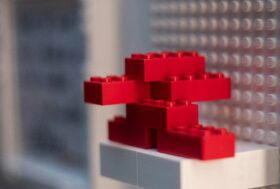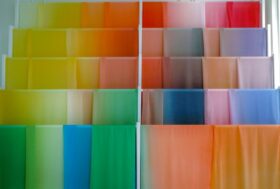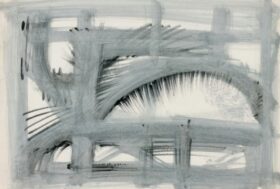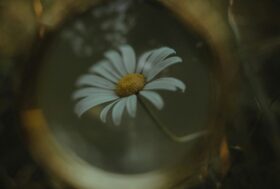Children’s existing ideas: building blocks or barriers to learning in science?

Thinking about the problem
Ask a group of children, young people or adults to identify an object they haven’t seen before and it isn’t long before we hear phrases such as, “It could be…”, “It looks bit like…”, “It reminds me of….”. We may even hear someone say, “It has [e.g. six legs] so it could be [e.g. an insect].” Discussions of this sort probably go on in classrooms everyday as our pupils (of all ages) endeavour to come to terms with new phenomena and ideas. What is striking is that they are trying to relate the unknown object or idea to what they already know in order to come up with a name or explanation. It also reminds us that our pupils come to school with ideas of their own based on what they have seen, heard and experienced in their lives to date; at home, in school and elsewhere. The reservoir of knowledge that our pupils accumulate varies from individual to individual and provides for each of them the backdrop to their future learning.
However, whilst some ideas lead seamlessly onto the next step towards understanding, others can become barriers and hinder learning. For example, as young children learn to count they begin to recognise that there is a sequence by which the number of objects increases. By working with physical objects initially they progress to a more abstract understanding of number and come to recognise, for example, that eight is more than four. This is all fine while they are working in whole numbers but when they are introduced to fractions the idea that eight is more than four is a potential barrier since one-eighth is less than one-quarter. As teachers, we are familiar with such common situations and have strategies to deal with them. However, to what extent are we aware of the pre-existing ideas pupils have in other situations and, importantly, to what extent do we understand why we need to take their ideas seriously and act upon them?
The importance of children’s ideas
The recognition of the importance of the ideas pupils of all ages bring into the classroom has been championed for over 50 years as a key strand in the development of constructivist approaches to learning, based on the premise that learners construct meaning by linking new ideas to their existing knowledge. Learning is an active process that requires the full engagement of the learners because, ‘it is, after all, the coherence as perceived by the pupil that matters in learning.’ (Driver, 1983). Therefore,
‘…it is as important in teaching and curriculum development to consider and understand children’s own ideas as it is to give a clear presentation of the conventional scientific theories.’ (Driver, 1983)
A wealth of research has built up since the 1970s into the types of ideas used by children and young people, predominantly in the fields of science and mathematics, to explain natural phenomena. Many of these ideas, often referred to as ‘intuitive ideas’, ‘misconceptions’ or ‘alternative frameworks’, are in conflict with accepted scientific or mathematical explanations. In the UK there were two seminal projects, Children’s Learning in Science Project (CLISP, 1984) (1984-1990), led by Ros Driver in Leeds, and the SPACE Project (SPACE, 1991), directed by Wynne Harlen and Paul Black. These projects not only investigated the ideas pupils held but also considered ways of taking their learning forward. Although CLISP focused on secondary age pupils and SPACE on primary, the findings had much in common and reflected those of the body of world-wide research at the time. More recently evidence from both behavioural studies and neuro-imaging have provided further insights into two issues that seem to be particularly pertinent to us in relation to children’s conceptual learning:
- Children’s existing ideas are based on the evidence and experience that they have incorporated into their thinking to date and as such they are not aware of other factors that may play a role in the explanation
- Children’s existing ideas are very persistent, even after a more scientific /mathematical explanation has been presented to them (Brault-Foisy et al., 2015).
What happens to children’s ideas
The very persistence of children’s existing ideas suggests that they don’t simply go away once the ‘correct’ explanation has been taught; rather it suggests that they are retained, at least in some form. Although there is still some debate, the evidence indicates that, even in individuals considered to be experts in their field, the more primitive intuitive ideas do continue to co-exist alongside more scientific understanding of phenomena (Brault-Foisy et al., 2015). A similar conclusion is reached by Mareschal (Mareschal, 2016) in his review of the neuroscience of conceptual learning in science and mathematics. The research highlights the role of what is known as ‘inhibitory control’ or ‘inhibition’. This process in the brain enables individuals to suppress their prior knowledge and intuitive ideas, when they are faced with new evidence or alternative explanations that are in conflict with their existing ideas. The ability to exercise inhibitory control is a key element in accepting and understanding new ideas, strengthening conceptual learning and cognitive development.
Evidence that prior (intuitive) ideas are not erased from the brain comes from both behavioural studies and brain imaging. Furthermore, both types of study indicate that the existing ideas can resurface when individuals are under pressure or unable to invoke the inhibitory control process for other reasons. Recent studies using reaction times (for example, (Shtulman and Valcarcel, 2012)) have demonstrated that even adults who have many years of experience working in science are less accurate in their responses to counter-intuitive questions when they are required to answer as quickly as possible. Even when they answered correctly their reaction times were much slower than when asked more intuitive questions. Findings such as these are consistent with the view that responding to the counter-intuitive questions involves greater cognitive effort as the individuals have to inhibit their initial intuitive response in order to come up with the correct answer.
Brain imaging studies support this interpretation of the behavioural studies and go further to indicate that different neural pathways are used depending on whether the reasoning is consistent or inconsistent with existing prior knowledge. Significantly, when faced with counter-intuitive situations, experts in the subject show more brain activity in those areas associated with inhibition than do novices (Masson et al., 2014). This further underlines the importance of the inhibitory function which predominantly involves two areas of the brain; the anterior cingulate cortex (ACC), which plays a significant role in the detection of conflict between existing ideas and new evidence; and the dorsal lateral prefrontal cortex (DLPFC), which has multiple regions supporting processes such as inhibitory control, working memory and the integration of information. It is the interaction between these two areas (ACC and DLPFC) that plays a critical role in the subsequent modification of conceptual understanding. Resolving the conflict between new and prior knowledge may also involve ‘seeing’ alternative interpretations of the evidence, and / or innovative solutions to problems; a process sometimes referred to as cognitive flexibility.
Implications for teaching
Evidence of how existing ideas directly impact not only on the conceptual learning of individuals, but also on their neural activity, is becoming more and more substantial. Although children have the capacity to make inhibitory responses from a young age, it becomes more sophisticated and powerful as they become older through adolescence into adulthood. However, we need to insert a word of caution here. Much of the evidence comes from studies involving mature adults so, although the activation patterns in children are similar, we cannot be entirely sure that the functions observed in the developing brain are the same as those in the mature brain. Similarly, much of the research so far relates to learning in science and maths so further work needs to be done across other domains of knowledge. That being said, the evidence underlines the importance of specifically checking children’s existing ideas, taking them seriously and explicitly relating them to the new ideas. Challenging pupils, both individually and collectively, to actively reconsider their ideas can productively result in pupils feeling uncomfortable with their existing ideas when presented with evidence or alternative ideas that contradicts their own. This is referred to as cognitive conflict and contributes to them revising their own ideas and conceptual understanding through using activities that:
- help children to communicate their ideas in using a range of forms and media, for example, verbally, in writing, pictorially and physical / digital modelling;
- allow them to explain and challenge each other’s ideas through, for example, using ‘pair-share’ activities to give pupils the opportunity to consider their ideas with peers before ‘going public’;
- encourage them to consider alternative ideas / explanations explicitly against what they already know and the evidence they have available and provide justification for their conclusions;
- discuss the words pupils use to describe and explain events by exploring with them their use and understanding of, for example, both ‘scientific’ and ‘non-scientific’ language and, more subtly, the use of particular words (for example, ‘force’) in scientific and non-scientific contexts;
- extend the range of evidence available to test their ideas often trying to find ways of making the ‘invisible’ visible, through the use, for example, of models and simulations;
- encourage generalization from one context to another by experiencing and considering phenomena in a range of contexts, for example, evaporation of liquids, other than water, in everyday situations such as the drying of paint or nail varnish;
- enable them to test their own ideas through practical hands-on activities and increasingly sophisticated and controlled investigations.
The evidence also supports the practice of allowing pupils more time to stop and think before they respond to questions. One example of this practice is variously referred to as ‘waiting-time’ (Rowe, 1986), ‘processing-time’, or ‘thinking time’ and requires us as teachers to pause for 3-5 seconds before pushing pupils for an answer. This idea has been around for nearly 50 years, but it is interesting that still, in many classrooms, pupils are often given less than 1 second to respond to a question. This is not to say that having reliable knowledge that can be recalled quickly doesn’t have its advantages – it does – but as part of the learning process it is also helpful to check that the answer being given is appropriate rather than allowing more primitive (incorrect) ideas to re-surface. Helping pupils develop inhibitory control appears to be an important step in their conceptual learning, which means that part of our role as teachers is to alert them to the possibility of alternative explanations of phenomena because, among other things:
- What they observe is not always consistent with the correct explanation, for example, the movement of the Sun in relation to the Earth
- There may be factors pupils are not yet aware of, for example, young children believe that light objects float and heavy ones sink but they do not automatically recognise the roles of shape, volume and density of the object, let alone the idea of displacement.
It is also important that we do not inadvertently introduce misconceptions into our teaching. Being aware of where this may occur will support planning schemes of work to incorporate strategies to avoid misconceptions being developed or, at least, to alert students to where such misunderstandings may occur.
A final thought
Evidence such as that highlighted in this article supports the importance of knowing, or at the very least, being aware of, the ideas our pupils bring to the classroom. It also helps to explain why some of the ideas children hold can become barriers to their subsequent learning and why intuitive ideas inconsistent with the accepted explanations of different phenomena can re-surface. Furthermore, it reminds us of the need to make some things more explicit, such as helping children to relate ideas to new contexts and to transferThe processes of applying learning to new situations their existing knowledge to new problems. Thus, we would argue that knowledge and effective use of children’s existing ideas is an important part of our pedagogical knowledge and would in fact agree with Ausubel (Ausubel, 1968) when he stated that ‘the most important single factor influencing learning is what the learner already knows. Ascertain this and teach him [/ her] accordingly.’ This, of course, is much easier said than done, but that doesn’t mean to say we shouldn’t keep trying to understand better the importance of children’s existing ideas and through further development of both our practice and research.
References
This article was published in February 2018 and reflects the terminology and understanding of research and evidence in use at the time. Some terms and conclusions may no longer align with current standards. We encourage readers to approach the content with an understanding of this context.










